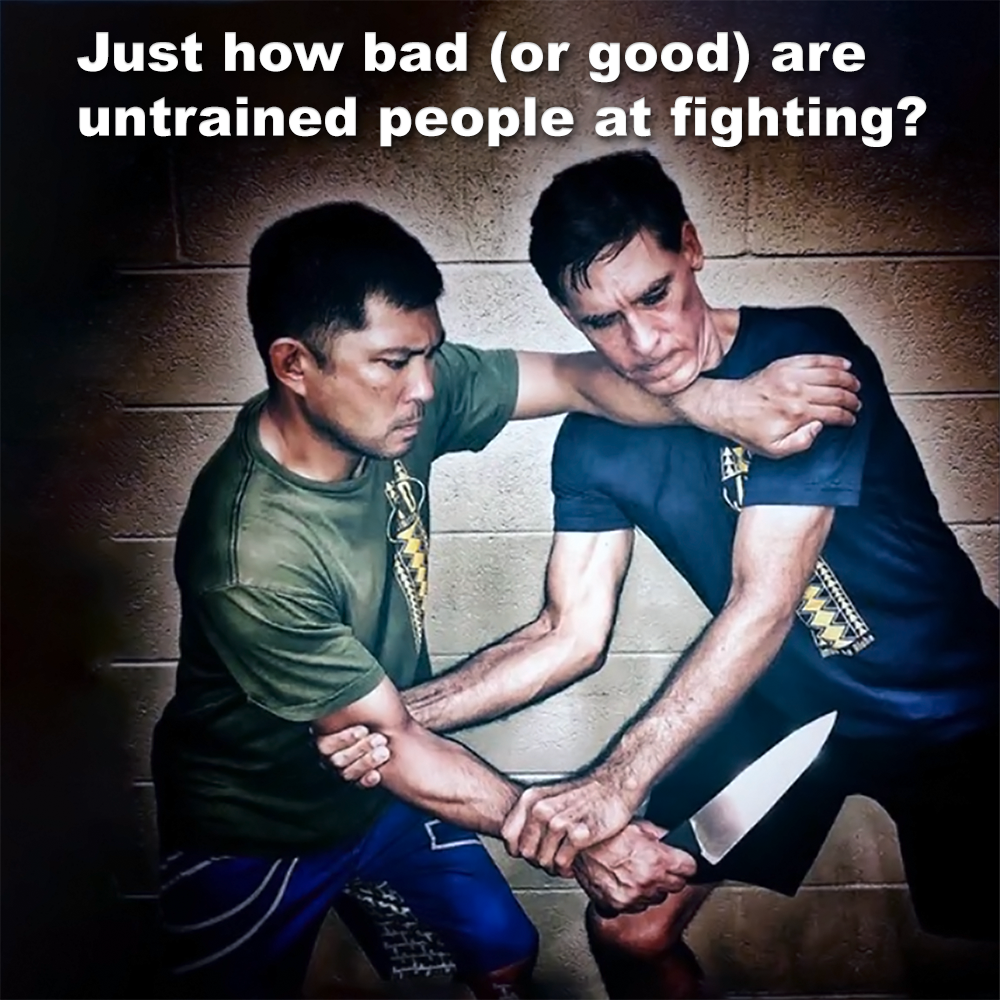
Just how bad (or good) are untrained people at fighting?
Posted by ADAM CARTER on DEC 10, 2023

Just how bad (or good) are untrained people at fighting?
Karate was originally created to protect yourself from civilian attacks….. “villain or ruffian”. (Ankoh Itosu precept quote)
Of course, it depends what we mean by untrained. There are plenty of people who learn how to fight from getting into fights.
A lot of what you see in sport martial arts (squaring off, hands up in a guard, testing distance, etc) may not translate well in non-consensual violence. Anyone who has squared up to someone at a distance, is no longer in a self-defense scenario, as it would be preferable to make an escape…. Surely the purpose of self-defense?
The effectiveness of untrained individuals in a physical confrontation is influenced by various factors.
Perhaps lacking the physical conditioning necessary for a prolonged fight can put untrained individuals at a disadvantage, affecting their strength, speed, and overall resilience.
But size and strength disparities between opponents play a significant role. A larger, stronger person may inherently have the upper hand, even if untrained.
While technique and skill can mitigate some of these differences, the impact of size and strength remains an important consideration. In the absence of formal training, individuals may rely on instinct and raw aggression during a confrontation.
For those that are completely untrained and untested, they may have no idea what they're doing but might get lucky with some desperate shots. You don’t need a lot of skill to throw wild swinging haymakers or to use a hidden weapon.
And there are many other factors that may go wrong, even for someone who is experienced.
This is why, for me, it is important to ensure you are training with the correct mindset, the correct context. Is it sport, dojo sparring, competition, self-defense? Etc….. Of course there is some cross-over between all of these concepts, but understanding the differences is hugely important.
And if your training is pragmatic and for self-defense purposes, you have to train with a high degree of realism after the initial learning phase is over.
Opponents that are not experienced are hugely unpredictable. They will not react as you expect them too, and an attacker is going to both resist and be uncooperative.
He will NOT allow you to do what you want with him….. No, his arm will not remain still, hanging out there for you to complete your brilliantly executed arm-lock.
Of course having a compliant partner is a must to learn a technique, but this should always be followed by progressive resistance, and non-compliance to add realism and build your skill.
If your technique doesn’t consistently work with resistance and pressure testing, IT WON’T WORK. PERIOD.
Some people are naturals at fighting without having trained any martial art, and anyone that relies or assumes that an attacker is incompetent or untrained, is promoting a dangerous line of thinking.
In a self-defense scenario, the danger posed by untrained individuals lies not merely in their intent, but in the unpredictability of their actions. Lacking the refined skills and controlled techniques of trained individuals, their instinctive and erratic responses can escalate a situation, making it imperative for those defending themselves to navigate the confrontation with extreme caution.
In facing an untrained adversary, you must navigate the confrontation with a huge amount of awareness. In the absence of refined skills, the outcome hinges on the ability to decipher and counteract the unrestrained force that may be unleashed.
Beware the untrained; their unpredictability makes them formidable adversaries…..
The bad guy always knows when the attack is coming.
![]() Photo Credit: Burton Richardson
Photo Credit: Burton Richardson
